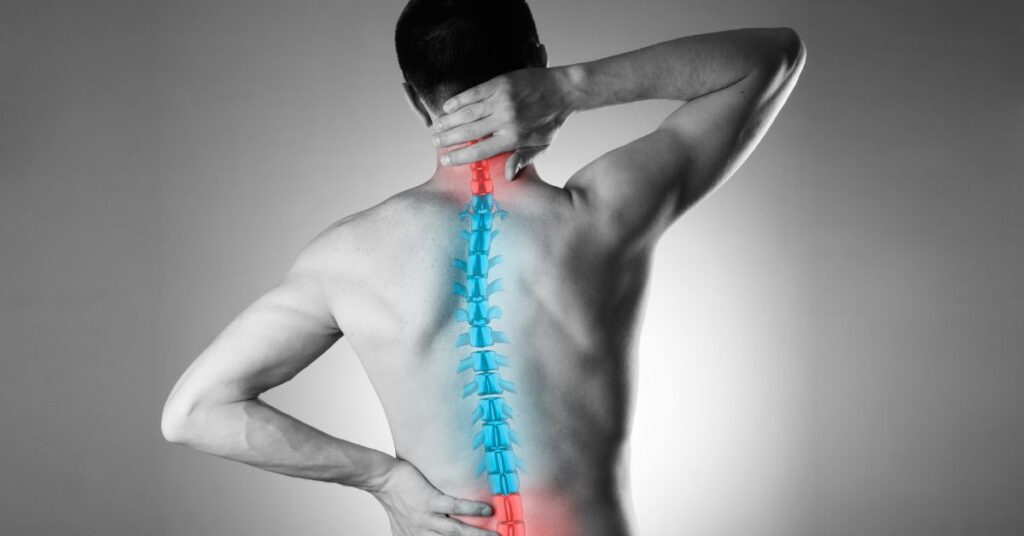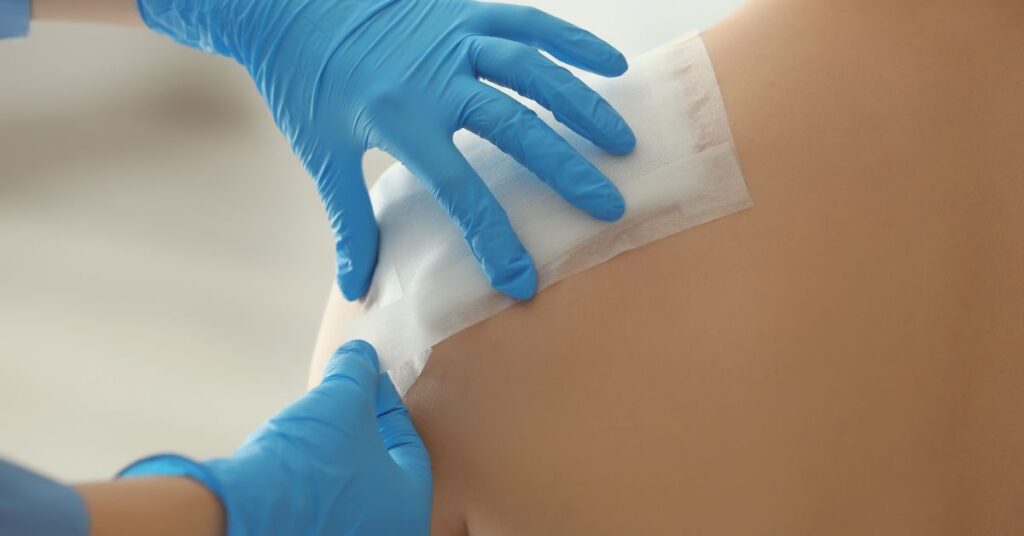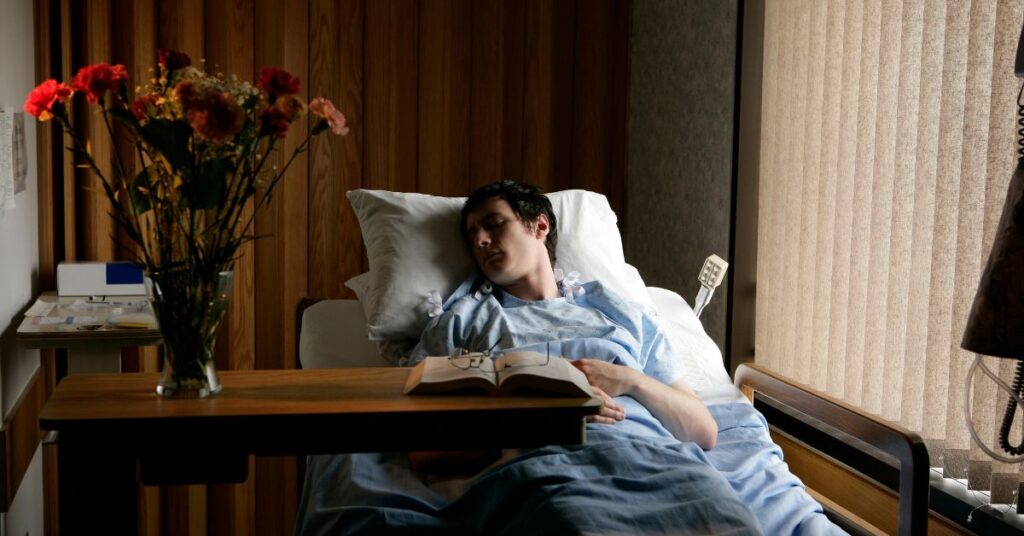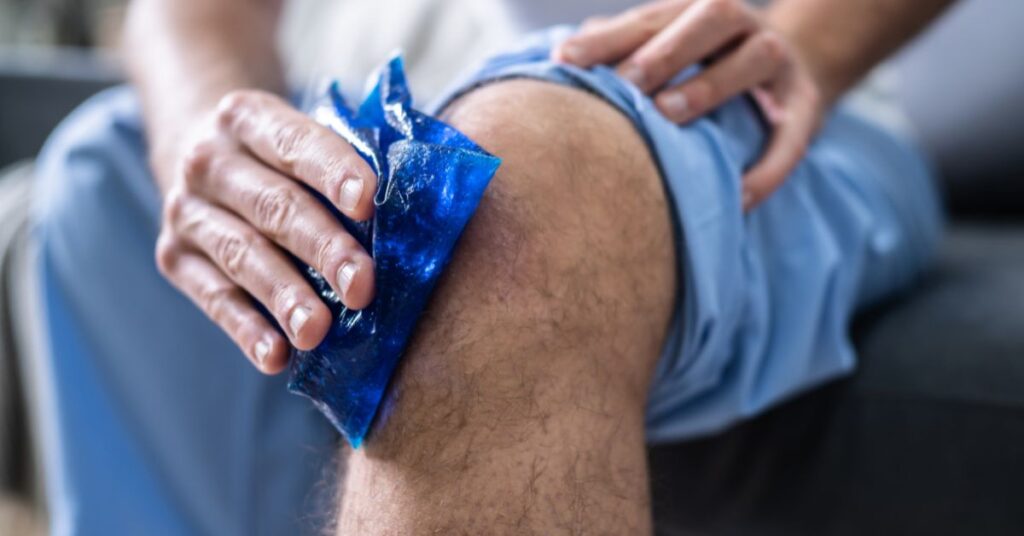Common Orthopedic Procedures For Car Accident Injuries That You Must Know
Accidents can often take a toll on your health both physically and emotionally. It can have some serious impact on your body without even you realising it. But what if there was a way to recover your mobility and strength so you could resume your favourite activities? Well, you’ve landed at the correct place.
You might’ve definitely heard about orthopedics. But have you ever given a thought to know about the different procedures of orthopedics? Maybe you should!
In the treatment and recuperation of accident victims, orthopedic procedures play a major role. So, in case you’re wondering what to do after an accident or which treatment you should be looking for, this blog is here to guide you through.
What Does an Orthopedic Specialist Do?
An orthopedic specialist, sometimes referred to as an orthopedic surgeon, is a person who specializes in treating your musculoskeletal system. The musculoskeletal system is an intricate network of bones, joints, muscles, ligaments, tendons, and nerves that are responsible for your body movements and functions.
An orthopedic expert can assist you in recovering and getting back to living an active, pain-free life, whether you have a fractured bone, ruptured ligament, or persistent discomfort.
An orthopedic surgeon identifies the underlying reason for your pain and suffering through physical examinations, imaging testing, and a review of your medical history.
On the basis of your injury and its severity, they provide a variety of treatment options, ranging from conventional surgical treatments to conservative measures including medicine, physical therapy, and injections. They assist you in regaining your strength, flexibility, and mobility by working with physical therapists to support your recovery.
An orthopedic specialist also guides you on posture correction, strengthening activities, and lifestyle changes that lower the chance of developing musculoskeletal problems in the future.
What Areas of the Body Commonly Need Orthopedic Surgery?
Orthopedics is a vast category which includes a multitude of body parts. But a question may arise as to which areas of your body really need an orthopedic surgery. Even though many areas of your musculoskeletal system may require orthopedic attention, but some body parts need orthopedic surgery more frequently than others. So let’s take a look at these body parts.
Wrists
Your wrists are one of the most delicate parts of your body. These fragile structures are prone to injuries such as fractures. They are also susceptible to a condition called carpal tunnel syndrome, which can cause tingling and numbness. In such cases, orthopedic surgeons might be your saviors, repairing fractures and relieving pressure on pinched nerves.

Ankles
Have you ever fallen downstairs or rolled your ankle while playing a game? Well, you’re not the only one out there. These wounds are quite common, particularly among athletes. But there’s nothing to worry. Orthopedic surgeons can quickly get you back on your feet by performing a variety of treatments, such as mending fractures and restoring damaged ligaments.

Hips
As we become older, our hips may become more worn out, which can result in diseases like arthritis. Fortunately, orthopedic procedures such as hip replacement and repairing of the femoral neck or a trochanteric fracture can be employed to recover from such conditions.

Spine
Our spine serves as the backbone of our body quite literally. However, it can occasionally suffer from problems such as herniated discs, spinal stenosis, and degenerative disc disease. To relieve discomfort and restore normal function, orthopedic surgeons perform surgeries including spinal fusions, laminectomies, and intervertebral disc repairs.

Knee
Throughout our lives, our knees bear a great deal of strain. Injuries such as a ruptured MCL (medial collateral ligament) or ACL (anterior cruciate ligament) are quite common. Fortunately, these vital ligaments can be repaired via arthroscopy, which frequently uses small grafts and anchors to restore the damaged tissue.
Another common orthopedic procedure is knee replacement. Replacing the damaged components with artificial ones can greatly increase mobility and decrease discomfort when arthritis or other disorders severely destroy the knee joint. This enables people to resume enjoying things that they may have previously believed were unachievable because of their knee discomfort.

Shoulder
Our shoulders function as the arms’ hinges, enabling us to grasp, move, and embrace objects. However, they may also be more vulnerable to ailments such as rotator cuff tears, which result in harm to the tendons and muscles that surround the shoulder joint. In such a case, an orthopedic surgeon may perform an arthroscopy. In this procedure, the surgeon makes tiny incisions and inserts tiny cameras and devices in order to repair the damaged tendon with the least amount of scarring and recovery time possible.
Shoulders may also encounter problems related to the clavicle, or collarbone. If the clavicle ends up separated from the remainder of the bone, arthroscopy can assist in excising (removing) the troublesome portion, enabling normal healing.
Furthermore, in case your shoulder feels too tight and uncomfortable, shoulder impingement might be the cause behind it. By decompressing the area and releasing the pressure, arthroscopy can help you regain your shoulder’s mobility.

Common Injuries from Car Accidents
Car accident injuries frequently manifest in the hours or days after the accident, even though sufferers may first feel completely well. Therefore, you must contact an orthopedic professional following an accident to stop concealed injuries from getting worse.
Some of the common injuries from car accidents that you might observe are:
Bone Fractures
Bone fractures are frequently sustained in car accidents as a result of the body’s quick deceleration, which strikes airbags or other internal components. Depending on the kind of fracture, orthopedic surgery or immobilization may be necessary.
Usually, a cast or other kind of immobilization is sufficient to cure small to average fractures. On the other hand, if the fracture site is misplaced or the bone fractures into several pieces, surgery can be required. In that case, you should consult an orthopedic physician right away if you develop a bone fracture as a consequence of a car accident.
Back Injuries
Those who get into car accidents may potentially sustain a variety of back problems. Herniated discs, fractured vertebra, dislocated vertebrae, and broken soft tissue are a few examples of back injuries. Surgery can be necessary to heal the damage, depending on how severe the accident was.
Back Injuries
Those who get into car accidents may potentially sustain a variety of back problems. Herniated discs, fractured vertebra, dislocated vertebrae, and broken soft tissue are a few examples of back injuries. Surgery can be necessary to heal the damage, depending on how severe the accident was.
Soft Tissue Injuries
In a car accident, a variety of soft tissue injuries may happen. Muscles, tendons, and ligaments frequently sustain injury when limbs extend beyond their normal limits and the body becomes stretched.
Certain soft tissue injuries require more intensive care, but the majority of soft tissue injuries heal on their own with proper time, rest, and physical therapy. However, restoring function to a broken muscle, tendon, or ligament requires surgery.
Knee Injuries
When legs are crushed by airbags or get lodged in the dashboard, it can often result in knee injuries from car accidents. About 10% of all injuries sustained in car accidents are knee injuries, with the following injuries being among the most frequent:
- Contusions: Blunt force injuries to the knee can result in contusions, also known as bruises, which cause swelling and discoloration. Although rest and ice are usually enough to mend contusions, severe instances could need medical intervention.
- Abrasions: In the event of a car accident, abrasions, also known as scrapes, happen when the knee hits a rough surface. Minor abrasions may usually heal with proper cleansing and wound care, but deeper or bigger wounds may need medical attention.
- Lacerations: These are skin wounds that may reveal underlying tissues. In more serious cases of knee lacerations, prompt medical assistance is essential for cleaning, stitching, and avoiding infection.
- Fractures: Broken bones are referred to as fractures, and the force of a car accident can result in fractures of the knees. Surgical intervention and rest may be necessary depending on the nature and severity of the fracture.
- Tears: The abrupt impact of a car collision can cause tears in the meniscus or ligaments of the knee. There are several ways to treat tears, from physical therapy for little ones to surgery for larger ones.
Neck Injuries
After an accident, neck pain may appear instantly or develop hours or days later. Your head may jerk during the collision, injuring tendons, ligaments, muscles, joints, discs, nerves, or bones. The following are a few typical neck injuries that you may observe:
- Herniated or Slipped Discs: A herniated or slipped disc is a spinal disc in which the robust outer layer gives way to a soft, gel-like center. This may cause discomfort and compression of the nerves. Physical therapy, rest, or, in extreme situations, surgery, may all be part of the course of treatment.
- Sprain or Strain: Strains refer to injuries to the muscles and tendons, whereas sprains of the neck include the straining or tearing of ligaments. These injuries are frequently caused by abrupt movements following an accident. Physical therapy, pain management, and rest are possible treatments for these injuries.
- Pinched Nerve: A pinched nerve is caused when the surrounding tissues apply too much pressure on the nerve. Pinched nerves in the neck can result from accidents and cause discomfort, tingling, or numbness. Depending on the severity, treatment options might range from conservative therapy to surgical surgery.
- Compression fractures: These injuries can happen in the neck following a car accident and entail the collapse of a vertebra. Immobilization, pain management, and, in certain situations, surgical stabilization are all possible courses of treatment.
- Muscle spasm: The involuntary contraction of neck muscles, commonly resulting from trauma, is known as a muscle spasm. Movement limitations and discomfort are possible outcomes of these spasms. Rest, cold or heat therapy, and—in certain situations—muscle relaxants are all part of the treatment.
What Type of Car Accident Injuries Would an Orthopedic Doctor Treat?
Accidents may significantly affect a person’s physical well-being. Orthopedic injuries from car accidents can range widely, from fractures to dislocations. In order to help accident victims regain their mobility and usefulness, orthopedic surgeons may perform treatments specific to their injury. The following are some of the injuries that an orthopedic doctor treats:
- Broken hips
- Fractures or breaks in the fingers, wrists, and hands
- Injuries to the shoulder, such as rotator cuff injury
- Injuries to tendons and joints, such as injuries to the knee’s anterior or medial cruciate ligaments (MCL/ACL)
- Spinal ailments, such as herniated spinal discs, spinal cord compressions, fractures of the vertebrae
- Soft tissue injuries like muscle strains, whiplash (a frequent injury to the neck brought on by an abrupt back and forth movement), tendonitis
When to See an Orthopedic Doctor after a Car Accident

Although not every accident injury is major, but consulting a doctor after an accident keeps you on the safer side. You might feel completely normal after an accident, but sometimes, certain injuries take time to show up. That’s why it’s critical to see a doctor as quickly as possible after an accident. This will ensure that your injuries are properly diagnosed, recorded, and that you receive all the adequate care. Here are some instances when you shouldn’t delay your appointment to an orthopedic specialist:
Prolonged onset of symptoms: After an accident, it’s normal for symptoms to take days or even weeks to manifest. But don’t take this lightly. You shouldn’t wait for any pain or discomfort to show up. Consulting a doctor at an initial stage will make it easier for your doctor to identify and treat the problem on time, avoiding any consequences and promoting a quicker recovery.
Hidden Injuries: Internal injuries sustained in a car accident may not be visible right away. Orthopedic experts may identify these hidden injuries with the use of X-rays and other diagnostic instruments, guaranteeing timely care and preventing any long-term problems.
Appropriate Diagnosis and Treatment: Expert diagnosis and treatment are beneficial for even seemingly minor injuries, such as sprains or strains. Orthopedic specialists can design a customized course of care to promote recovery, prevent complications, and alleviate chronic discomfort.
Here are particular situations where seeing an orthopedic doctor after a car accident is strongly recommended:
- When you feel any kind of pain, stiffness, or restricted movement in any area of your body, no matter how small.
- When you observe any deformities, swelling, or bruise in your body.
- When you feel weak, tingly, or numb in your limb area.
- When you experience headaches, dizziness, or neck discomfort due to whiplash.
Though you might want to consult your primary care physician, however, these physicians are usually not accessible immediately. Moreover, basic care clinics often lack the advanced diagnostic tools that would be needed to assess your injury. In that case, you must visit the emergency department of the hospital so that your injuries are treated on time.
After an evaluation in the emergency department, your doctor may suggest an orthopedic expert for a follow-up visit depending on the kind and extent of your injury. In that case, you should schedule an orthopedic consultation as soon as you can. However, due to the heavy demand of orthopedics, you may have to wait for a longer duration for your appointment to arrive.
Thankfully, things are starting to change. Recognising the unique requirements of accident patients, several clinics are providing additional alternatives for immediate care. Some even claim to offer orthopedic emergency care specifically designed to treat patients quickly without making them wait a long time.
Orthopedic Procedures Needed By Accident Victims
The department of orthopedics is one of the most complex and vast territory in the field of medicine. There are various procedures that come under orthopedics, and so it can become quite a task for you to understand each one of them. But knowing about the orthopedic procedures required for accident victims can be useful in various occasions. Orthopedic procedures are meant to help accident patients regain their mobility, alleviate pain, and improve their overall quality of life. So let’s have a look at these procedures one by one.
Fracture Repair
One of the most frequent injuries brought on by accidents is a fracture. Orthopedic doctor may use a variety of methods to treat fractures including, internal fixation with screws, plates, or rods, external fixators, and immobilization using casts. However, the procedure used will depend upon the kind and severity of your fracture.
Joint replacement surgery
Accidents can have a serious impact on the joints, necessitating surgery. These joint replacement surgeries are usually done on the hips, knees, and shoulders. During joint replacement surgery, defective or damaged joint surfaces are removed and artificial implants are placed in their position. For accident sufferers, this technique can greatly increase movement and reduce discomfort. India is a popular destination for joint replacement surgery since its orthopedic physicians and surgeons are among the best in the world when compared to those in other developed nations.
Knee Replacement Surgery
Some accident victims may require a complete or partial knee replacement treatment, in case their knee cartilage has been destroyed. In knee replacement surgery, the orthopedic doctor replaces the damaged knee components with metal ones. The entire recovery process for this surgery may take up to three months. However, patients can be released five days after surgery.
Shoulder Replacement Surgery
In this procedure, a damaged portion of the humerus or the upper arm is removed and a metal ball is positioned in its place. Both the damaged portion of the socket and the wounded socket are replaced. If the rotator cuff is also fractured as part of the injury, the positions of the ball and socket are also switched. In such case, the arm possesses the socket and the shoulder possesses the ball. Plates and screws are used to hold these in position. Depending on how serious the damage was, the recovery period may vary, but it may take a shoulder up to a year to fully heal.
Rotator Cuff Repair
Shoulder injuries, especially rotator cuff injuries, are common among accident victims. Repairing a torn or injured rotator cuff includes reassembling the tendons in the shoulder joint. Accident sufferers can resume their regular activities after this operation, which can relieve discomfort and restore shoulder function.
Spinal Fusion
Spinal injuries are also frequently observed in accident survivors. It can result in spinal cord compression or instability. By connecting two or more vertebrae, spinal fusion surgery stabilizes the spine, reduces discomfort, and stops further harm. It is often carried out using metal implants, bone transplants, or a mix of the two.
Arthroscopy
This relatively simple surgical technique is used to identify and address a range of joint disorders. Orthopedic surgeons can see and fix injured ligaments, cartilage, or tissues in the joints by making tiny incisions and putting specialized devices and a tiny camera inside. With this surgery, scarring can be reduced and recovery is also much quick. In comparison to other countries, the cost of arthroscopy therapy is lower and more reasonable in India.
ACL Reconstruction
Anterior cruciate ligament, or ACL, is often torn in accidents, particularly those involving sports. During an ACL reconstruction, the damaged ligament is replaced with a graft, usually either from the patient’s own tissue or that of a donor. Since this procedure stabilizes the knee joint, accident patients can resume their prior levels of physical activity after this. Given that India is home to some of the world’s most reputed surgeons, patients seeking ACL reconstruction should expect the greatest care available when compared to more developed countries.
Joint Fusion
Car accidents can severely affect the joints and it may also damage a joint’s cartilage. When the cartilage in a joint is so badly damaged that it needs to be removed, an orthopedic surgeon will fuse the two bones that used to connect the joint earlier, basically creating one bone from two. This procedure improves stability and often lessens discomfort. However, depending on the bone and where it is positioned in the body, it may reduce flexibility or may cause total immobilization.
Trigger Finger Release
Some accident victims may lose the ability to move their fingers after an injury. This happens when the accident affects the protecting tissue surrounding a tendon in their hands. An injury or inflammation to the tissue prevents the tendons from fully expanding. In that case, an orthopedic surgeon makes a small cut in the palm and releases the tendon from the adjoining tissue.
Degenerative Diseases That Can Be Triggered by a Car Accident
Car accidents typically do not lead to degenerative diseases. But there can be certain instances where your tissues and organs begin to deteriorate due to these diseases. This can happen as a result of age-related wear and tear, hereditary reasons, or other factors. Nonetheless, in certain situations, a car accident might worsen pre-existing degenerative disorders or encourage their progression.
Here are some degenerative ailments that can result from accidents:
- Arthritis: It is a condition that causes moderate to severe joint pain.
- Spinal stenosis: If the channel between your vertebrae becomes narrower, it might result in spinal stenosis. It often arises from a severe injury. The channel starts to interfere with your neurological system when it gets too small. When the illness worsens, it can be quite painful.
- Sciatica: It is a common ailment marked by lower back pain, weakness, numbness, or tingling that travels down your leg, often along the line of your sciatic nerve. Depending on the severity of the condition, the pain can range from mild to excruciating.
- Hip bursitis: It is a condition which causes inflammation of the bursa, a fluid-filled sac that surrounds and protects the muscles, tendons, and bones of your hip joint. The pain of hip bursitis can get unbearable at later stage.
- Infections: An infection may arise if a damaged bone protrudes through the skin. Complications may arise from these infections if they are not treated on time.
- Tendonitis: It is a common ailment that results in inflammation of the tendons (the ones that connect your bones and muscles). This inflammation of the tendons causes immense pain, often leading to aches, burns or numbness around the affected joint.
First Aid Methods Appropriate for Orthopedic Injuries



While it is imperative to see a doctor whenever there is any suspected orthopedic injury, yet, there are times when first aid measures can be of great help. You can perform basic first aid measures in certain situations to prevent more harm and facilitate recovery. Do you want to know how? Here are some useful tips that you can follow:
Apply the method of RICE – Rest, Ice, Compression, and Elevation.
- Rest: The most vital rule for any first aid method is giving proper rest to the wounded region. At this time, avoid any kind of rigorous activity as it might further worsen your wound.
- Ice: In order to treat the afflicted region, use ice packs covered in a towel for about 15 to 20 minutes, multiple times a day. However, avoid putting ice directly on the skin.
- Compression: Apply a thin layer of pressure to the wounded region using an elastic bandage or wrap. Make sure the fit isn’t too tight to restrict blood flow.
- Elevation: In order to lessen swelling, raise the affected part above the level of your heart.
Other additional tips that you need to keep in mind:
- Never try to move a dislocated joint or a fractured bone.
- Avoid massaging or using heat on the damaged region.
- Unless directed by a medical expert, never take pain killers.
Benefits of Seeing an Orthopedic Doctor after a Car Accident
A car accident can have severe aftereffects that leave you feeling physically unsettled and unclear of what to do next. With the shock and adrenaline rush, you might be unable to acknowledge any pain or discomfort. But whatever the reason may be, it’s imperative to get medical attention after an accident—especially from an orthopedic doctor.
Orthopedic clinics often have the specialized equipment needed to treat and diagnose issues with bones and joints. Moreover, it uses advanced technologies like X-rays, CT scans, and MRIs to detect the type of ailment.
Additionally, orthopedic doctors treat victims of car accidents on a daily basis. This implies that they are probably used to handling the insurance claims that arise from these kinds of mishaps.
For victims, collaborating with a skilled orthopedic doctor may simplify the claims procedure. Due to their knowledge of the procedure, doctors can completely understand the financial difficulties that victims have to face. And so, due to this reason, they often offer additional alternatives of payment to their patients.
Above all, orthopedic doctors handle such traumatic accident patients on a daily basis. Therefore, they know what injuries to search for, including those that could be hidden. As a result, the diagnostic procedure takes less time, which may enable you to receive the required care faster and start recuperating.
FAQs
What are the most common orthopedic surgeries?
The most common orthopedic surgeries may include, knee replacement surgery, hip replacement surgery, ACL reconstruction, shoulder replacement surgery, arthroscopy, spinal fusion, rotator cuff repair, etc.
How do orthopedic surgeons fix bones?
Orthopedic surgeons often use metal plates, rods, screws, or pins to keep the bone in place. In case of a fracture, they create an incision at the end of a long bone and implant a rod along the interior of the bone to stabilize and mend the fracture. After that, the broken bone is adjusted.
What are the 4 A’s of orthopedics?
The 4 A’s of orthopedics are apposition, alignment, apparatus, and activity.
What is the hardest orthopedic surgery?
Some of the most complex orthopedic surgeries may involve spine surgery, complex fractures, spine surgery, and tumor resections.

